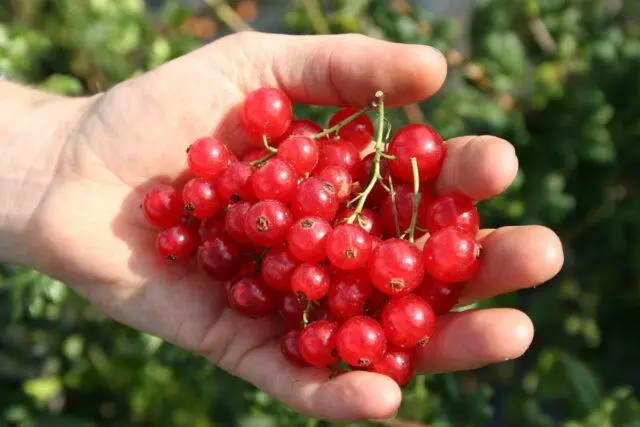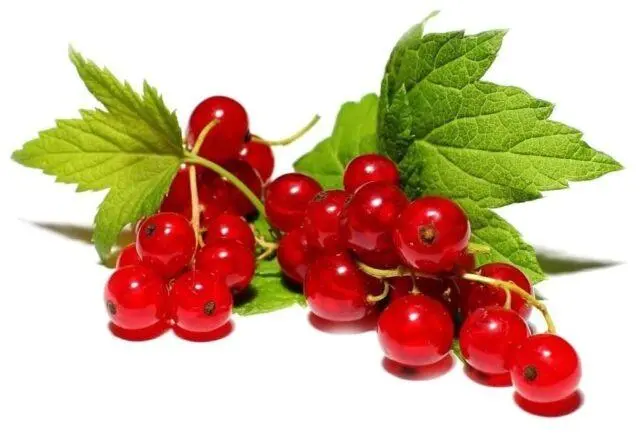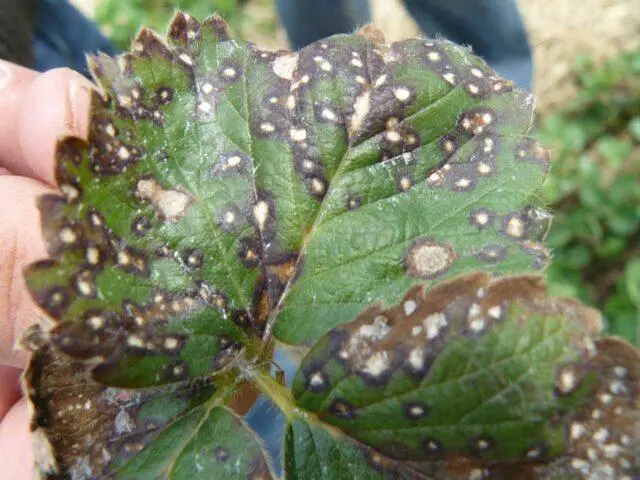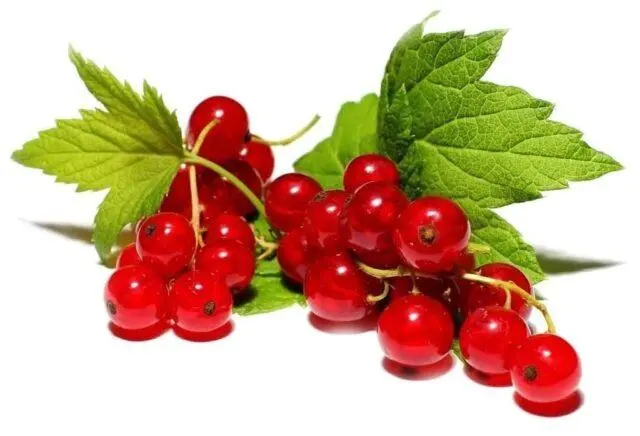Contents
Redcurrant was first brought to Our Country from Western Europe in the fourteenth century. Today, a shrub with sweet-sour berries of bright scarlet color is grown in any garden from Kaliningrad to the Far East. Among the huge variety of varieties of domestic breeding, red currant Rosetta is considered one of the most popular species.

Winter hardiness of red currant is much higher than black
History of breeding
The Rosetta or Rosita variety was obtained at the Novosibirsk Horticulture Station of the Agricultural Academy, in 2004 it was included in the State Register of Breeding Achievements of the Federation and recommended for cultivation in the West Siberian region.
Currant Rosetta (Rosetta) obtained by crossing two varieties of American breeding:
- Red Cross (Red Cross) – medium ripening, with a spreading bush and large berries of sweet and sour taste.

- Minnesota (Minnesota) – a late variety with an upright, medium-sized bush, large, sweet berries.

Description of the variety of red currant Rosetta
Rosetta currant bush is medium tall, its shoots reach a height of 1,2 m. The branches are powerful, thick, compactly arranged, the crown shape is compressed. The bark on the stems is brown-red. The leaves are small, dull, wrinkled, dark green. Leaf blades of a three-lobed structure with less pronounced basal parts. Their edges are serrated, rounded, with a shallow notch at the base and a long petiole.
The pale flowers of the red currant Rosetta are collected in a brush up to 10 cm long, with a straight, pubescent axis of medium thickness. The sepals are pinkish, arranged horizontally.
Berries in the stage of full maturity become red, with a sweet and sour taste. Their shape is round-ovoid with a skin of medium thickness.
Features
Redcurrant Rosita was created in Siberia. The characteristics acquired by it are fully consistent with the climate of this region, they allow growing berry bushes in difficult weather conditions. These features should be taken into account in order to avoid mistakes during planting, growing and care.
Drought resistance, winter hardiness
The variety Rosetta has a high drought tolerance. The plant easily tolerates hot periods, lack of rain and watering. As a result of overheating, the berries do not bake, do not fall off, being tolerant of heat, dehydration and drying out of the soil. Winter hardiness of red currant is high. Even in the conditions of Western Siberia, the plant does not require shelter for the winter, it is enough just to mulch the near-stem circle and periodically pour snow in the winter.

Do not plant Rosetta redcurrant next to cherries, plums and raspberries
Pollination, flowering period and ripening period
Red currant varieties Rosetta refers to pollinated by bees. The presence of insects is necessary in order to transfer the pollen to the stigmas. With the help of the wind, this does not happen because of its stickiness. To get a guaranteed harvest, several bushes should be planted nearby.
Flowering of the red currant Rosetta begins in the second decade of May, and ripening – in late July and early August.
Productivity and fruiting, keeping quality of berries
The ripening berries of the red currant Rosetta have a pleasant sweetish taste with a pronounced sourness. Experts rate it 4 out of 9,9. Sugars make up 30,2%, ascorbic acid – 100 mg / 0,8 g. The weight of each is from 1,7 g to XNUMX g.
When grown on an industrial scale, the average yield of the variety is 9,4 t/ha. In the conditions of a personal plot, about 3 kg are collected from one bush.
Redcurrant Rosetta has an average transportability, the skin of the berries is thin, but dense. If necessary, they can be transported over long distances. The use is universal – they are consumed fresh, they prepare jams, compotes and preserves. Frozen can be stored for up to three months.

Vegetables and strawberries can be grown next to the red currant Rosetta, since the roots of the shrub are located at a depth of 50 cm
Disease and pest resistance
The variety Rosetta has an average resistance to anthracnose and septoria. To prevent the development of diseases in a timely manner, preventive treatments of the shrub should be carried out.
Antraknoz
The first symptoms of a fungal disease appear as yellow spots on the leaves, which gradually dry and fall off. To combat pathology, spraying with “Kuprozan”, “Ftolan” is carried out at a time when the kidneys have not yet begun to grow.

In order to prevent anthracnose, it is necessary to monitor the regularity and volume of watering.
septoriosis
An indicator of the disease is white-brown spots, small at first, and later increasing, merging and affecting the entire leaf. Small black dots are visible on them – spores of the fungus. As a result, the bush may gradually die, and neighboring ones may become infected with septoria. At the first signs of pathology, it is necessary to remove the diseased parts of the Rosetta red currant, and spray the healthy parts with copper-based preparations.

Treatment with copper sulphate is carried out at least three times per season
Among insects, glass and leaf aphids cause the greatest harm to red currants. To combat them, they use chemicals, tobacco infusion, plant garlic, marigolds and other plants with a strong smell between the bushes.
Advantages and disadvantages
With proper care, Rosetta redcurrant can bear fruit abundantly for twenty years in one place. When taking into account all the nuances of planting, it gives stable yields for many years.

Redcurrant berries can be dried and stored for six months
Grade Advantages:
- resistance to heat and drought;
- great frost resistance;
- large berries;
- their high taste value;
- ease of maintenance bushes;
- unpretentiousness in care;
- versatility of use.
Cons of the Rosetta variety:
- low resistance to anthracnose and septoria;
- poor tolerance of waterlogged soil.
Features of planting and care
For planting red currant Rosetta choose a sunny place. The best neighbor for her is gooseberries. The soil should be fertile, saturated with organic matter. Sandy is not suitable for berry bushes, and slightly acidic loams are the best choice for him. The currant does not tolerate swampiness and the high location of groundwater.
The optimal planting time is early spring, in which case the plant has time to take root well and prepare for the upcoming winter.
The site is cleared of weeds, loosen the soil and dig holes 60 cm deep and wide, located at a distance of 1,5 m from each other. Fill them with compost by 50% of the volume, add wood ash (2 cups) and the previously extracted earth. Mix thoroughly. Planting currant seedlings is carried out according to the plan:
- Make a hole in the planting hole.
- A seedling is placed in it at an angle of 45⁰, with the top to the north.
- Fall asleep with soil.
- Compact the soil.
- Make a circular roll.
- Water and mulch the near-trunk circle.
Further development of the seedling depends on the correctness and thoroughness of care.

If the roots are shortened when planting a seedling of red currant Rosetta, replacement shoots will grow faster
Watering and top dressing
In the first month after planting, currants are watered regularly, twice a week, spending up to 10 liters of water under one bush. Later moistening is carried out in July and October, if there is no precipitation.
Top dressing is applied three times:
- urea – in spring (20 g/m2);
- solution of bird droppings – during the flowering period (1 kg per 10 liters of water);
- wood ash – in September (100 g per bush).
Trimming
The first formative pruning of currants is carried out immediately after planting, choosing four powerful shoots on the plant and shortening them to five buds. In the second year, twice as many shoots are left, the tops of which are cut off by 20 cm. In subsequent seasons, growths located at an acute angle, dry, diseased and damaged branches are removed.
Conclusion
Red currant Rosetta was created specifically for the harsh conditions of the West Siberian region. By growing it in milder climatic conditions, a plant is obtained that has excellent characteristics that allow it to survive temperature extremes, frost, drought and at the same time maintain the quality of berries and high yields.
Reviews with photos about red currant Rosetta













